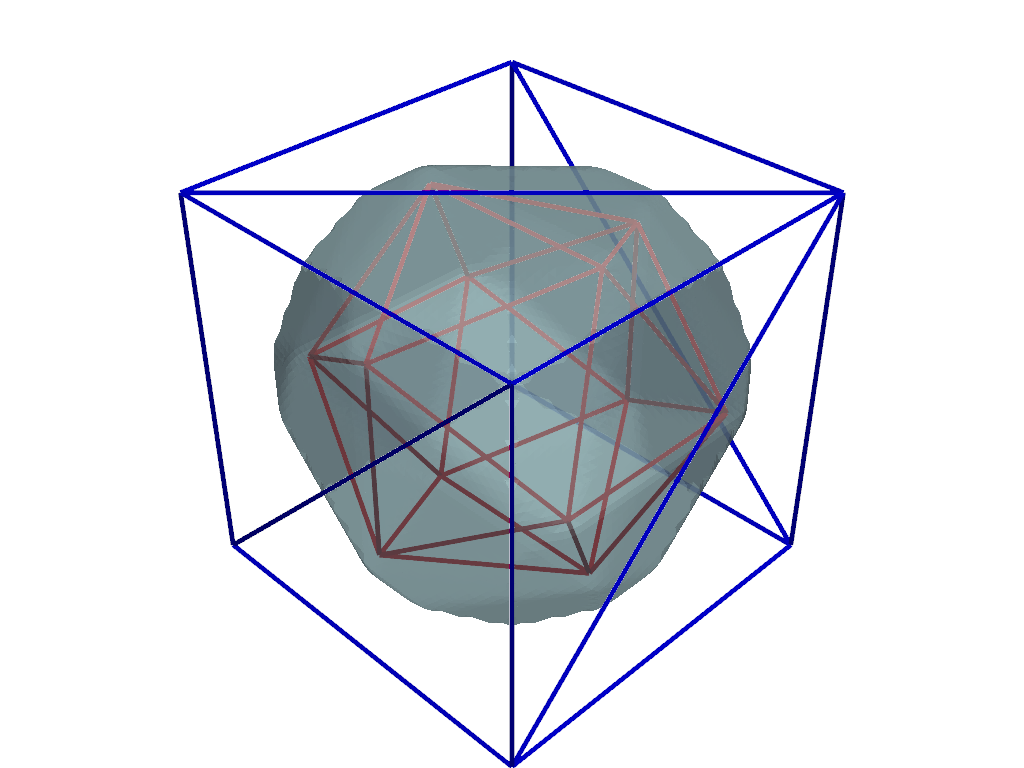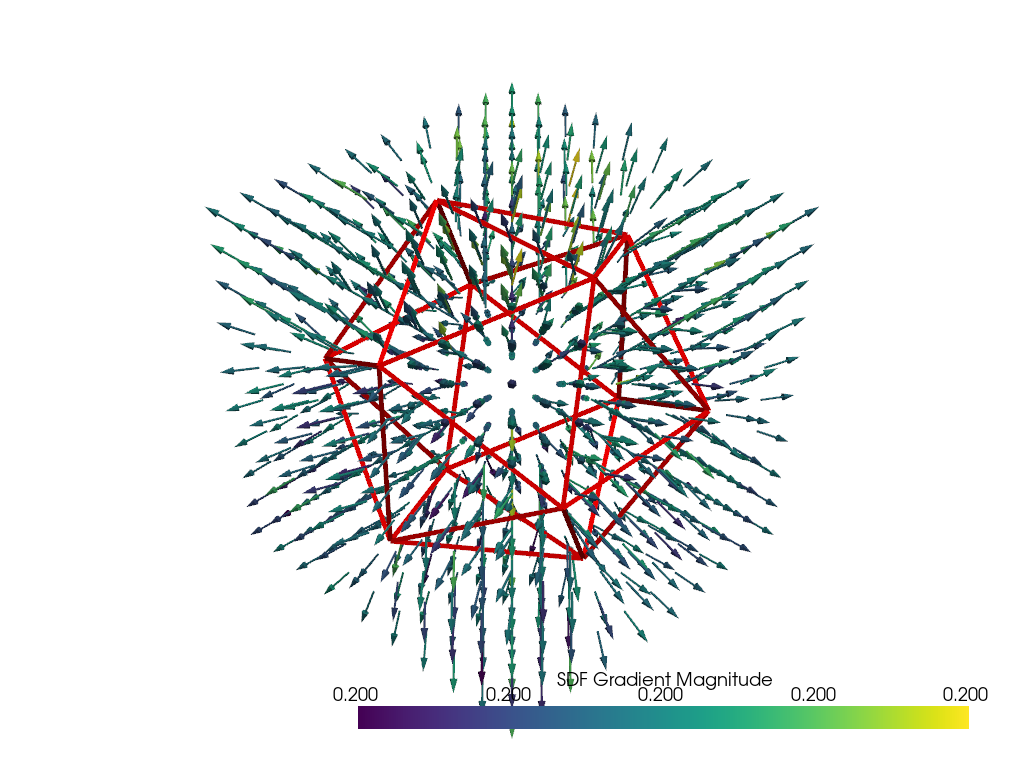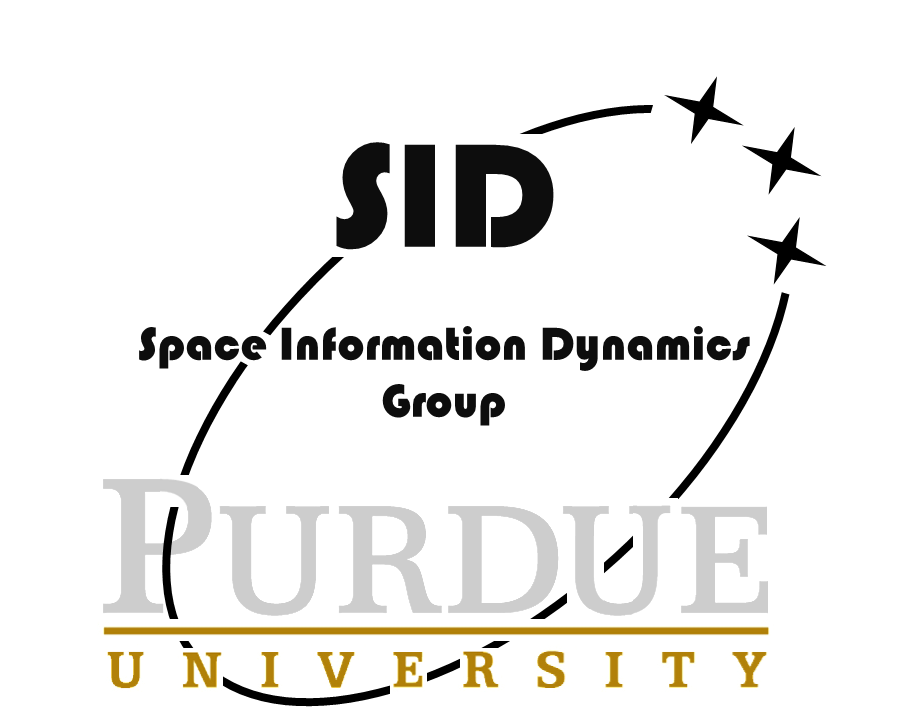Note
Go to the end to download the full example code.
Merging with Bias#
Merging trimeshes using their SDFs with spherical bias weighting
import numpy as np
import pyvista as pv
import mirage as mr
import mirage.vis as mrv
obj1 = mr.SpaceObject('icosahedron.obj')
obj2 = mr.SpaceObject('cube.obj')
sdf1 = obj1.get_sdf()
sdf2 = obj2.get_sdf()
# The bias should be a function of azimuth and elevation, returning on [0,1]
weighting1 = lambda az, el: 10
weighting2 = lambda az, el: 10
obj_merged = mr.merge_shapes([obj1, obj2], [weighting1, weighting2])
pl = pv.Plotter()
mrv.render_spaceobject(pl, obj1, color='r', style='wireframe', line_width=5)
mrv.render_spaceobject(pl, obj2, color='b', style='wireframe', line_width=5)
mrv.render_spaceobject(pl, obj_merged, opacity=0.7)
pl.show()

Let’s visualize the gradient of the SDF
grid = mr.r3_grid(np.max(mr.vecnorm(obj1.v)), 10)
gaz, gel, _ = mr.cart_to_sph(*grid.points.T)
sdfs = sdf1.query_grid(1.3 * np.max(mr.vecnorm(obj1.v)), 150)
pdata = pv.PolyData(grid.points)
pdata['SDF Gradient'] = sdf1.gradient(grid.points)
pdata['SDF Gradient'] = pdata['SDF Gradient'] * grid.spacing
pdata.active_vectors_name = 'SDF Gradient'
arrows = pdata.arrows
pl = pv.Plotter()
mrv.render_spaceobject(pl, obj1, color='r', style='wireframe', line_width=5)
pl.add_mesh(arrows)
pl.show()

Total running time of the script: (0 minutes 0.934 seconds)
